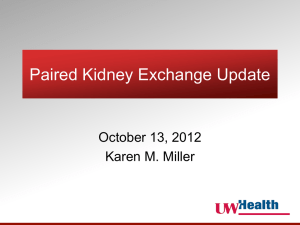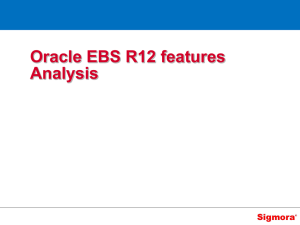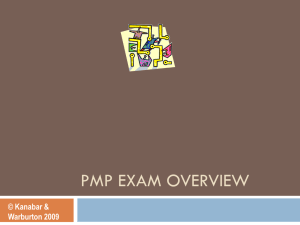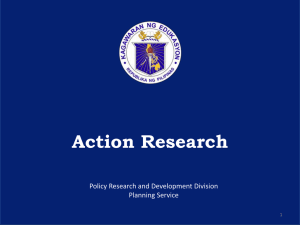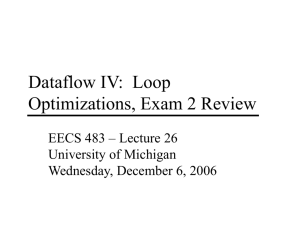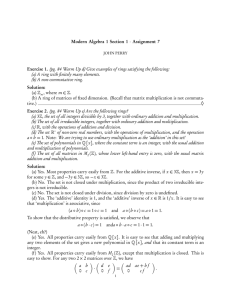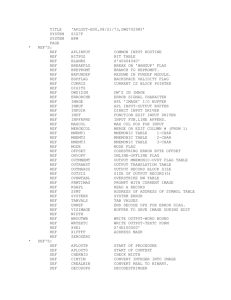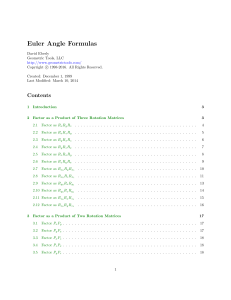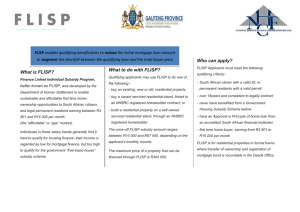Answers to questions under contract # KHSTTIRP-D / SW
advertisement
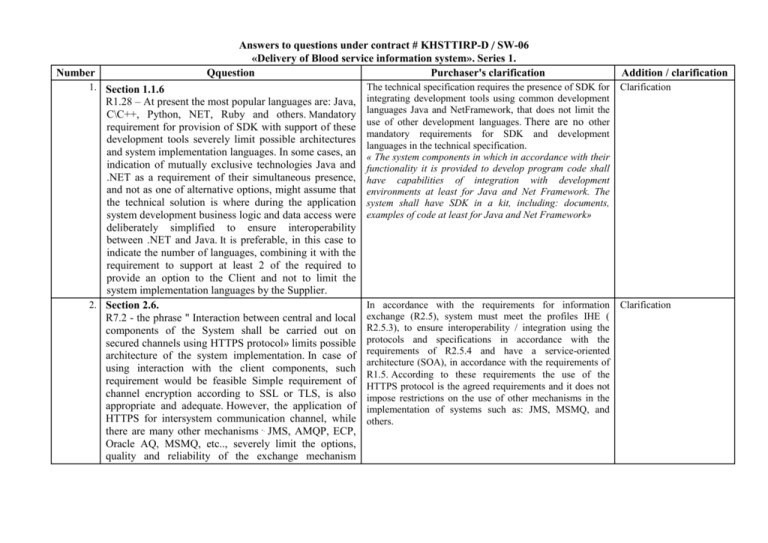
Number Answers to questions under contract # KHSTTIRP-D / SW-06 «Delivery of Blood service information system». Series 1. Qquestion Purchaser's clarification 1. Section 1.1.6 R1.28 – At present the most popular languages are: Java, С\С++, Python, NET, Ruby and others. Mandatory requirement for provision of SDK with support of these development tools severely limit possible architectures and system implementation languages. In some cases, an indication of mutually exclusive technologies Java and .NET as a requirement of their simultaneous presence, and not as one of alternative options, might assume that the technical solution is where during the application system development business logic and data access were deliberately simplified to ensure interoperability between .NET and Java. It is preferable, in this case to indicate the number of languages, combining it with the requirement to support at least 2 of the required to provide an option to the Client and not to limit the system implementation languages by the Supplier. 2. Section 2.6. R7.2 - the phrase " Interaction between central and local components of the System shall be carried out on secured channels using HTTPS protocol» limits possible architecture of the system implementation. In case of using interaction with the client components, such requirement would be feasible Simple requirement of channel encryption according to SSL or TLS, is also appropriate and adequate. However, the application of HTTPS for intersystem communication channel, while there are many other mechanisms -. JMS, AMQP, ECP, Oracle AQ, MSMQ, etc.., severely limit the options, quality and reliability of the exchange mechanism Addition / clarification The technical specification requires the presence of SDK for integrating development tools using common development languages Java and NetFramework, that does not limit the use of other development languages. There are no other mandatory requirements for SDK and development languages in the technical specification. « The system components in which in accordance with their functionality it is provided to develop program code shall have capabilities of integration with development environments at least for Java and Net Framework. The system shall have SDK in a kit, including: documents, examples of code at least for Java and Net Framework» Clarification In accordance with the requirements for information exchange (R2.5), system must meet the profiles IHE ( R2.5.3), to ensure interoperability / integration using the protocols and specifications in accordance with the requirements of R2.5.4 and have a service-oriented architecture (SOA), in accordance with the requirements of R1.5. According to these requirements the use of the HTTPS protocol is the agreed requirements and it does not impose restrictions on the use of other mechanisms in the implementation of systems such as: JMS, MSMQ, and others. Clarification implementation. 3. Section 2.9. R10.1.5.7 - a mandatory requirement to the DMBS limits the choice of possible database options, on which the system can be built. The requirement for highperformance during processing of XML documents is relevant to the target system, but not to the underlying nuances of its implementation. 4. Section 2.9.2 R10.3.5 - indicates a specific implementation of services, which are not conditioned by a requirement of the subject area. Acceptable option of wording "services developed by the supplier must provide the following functions..", while specific implementation of the mechanism of services is the supplier’s responsibility, without degrading the performance of the system. For example, an alternative implementation may imply combination of "service for registration and obtaining information about blood donors and donations" and "Service for management of blood donor status" as a single service. In this case, the services are already separated and imply only a unique implementation structure. The same applies to the requirements R10.4.14, R10.5.7, R10.6.5, R10.7.4, it is desirable to specify the required service functions, but not the architectural implementation of these services. XML support is necessary for the storage and processing of medical documents in the CDA R2 format (ISO / HL7 27932: 2009). Currently, XML support is available in a variety of databases such as: Oracle, MS SQL, PostgreSQL and others.This requirement (R10.1.5.7) is not excessive or restrictive. «R10.1.5.7 The DBMS shall be high performance and effective on the part of processing and saving XML documents or other similar formats for storage of connected hierarchy data (CDA R2 format). The DBMS shall ensure capability of indexing and searching the connected hierarchy data on XML fields of document or another similar format» In the technical specification the functions of services are separated logically, the bidder may offer a solution with another division of the service functions. A mandatory requirement is availability of all service functions specified in the bidding documents. Clarification Clarification 5. Section 2.10 In accordance with R11.1.29.1, the requirement for the Clarification R11.1.29.1 - unreasonable requirement for having number of concurrent users has been established. This exactly 100 concurrent users, no estimates in accordance requirement is not applied to the local component DBMS licensing on the part of using competitive with the automation facilities provided. licenses. Requirements for DBMS licensing is given in R11.1.29.12 - R11.1.29.14. 6. Section 2.10 The requirement to support the version of Internet Explorer Addition R 11.2.7 in most implementation options is contrary to has been changed. the restriction in the requirement to support HTML5 and Internet Explorer 9 as the appropriate API for that browser has not been implemented, and therefore the requirement R9.2 is incorrect since it means additional components and not just a HTML5 standard. 7. Section 3 The comment is taken into consideration. Addition R12.5 - an indication of English as a compulsory to The wording of R12.5 has been changed to the following: provide guidance for all components of the system is the " Supplier shall prepare corresponding guidelines for all limiting factor. Given the fact that this language is not a system components in English, Kazakh, Russian languages according to requirements R20, R21.» state and none of the users categories uses this as their Paragraph R20.2 changed to the following: primary language, this requirement seems excessive for " Supplier shall prepare corresponding guidelines for all the intended system operation and especially in the case system components in Kazakh, Russian languages where the supplier does not use the system, originally according to requirements R20, R21. " designed for English-speaking users. 8. Sections 3 and 5 Items R12.15, R12.16 and R12.17 are dropped from Addition Requirements R12.15, R12.16, R12.17 - imply the the bidding documents. presence of the Supplier's prototype at the time of bidding publication that includes all basic modules and system components closely similar to the TS system. Given the uniqueness of the project and difference of its requirements from the regional standard automated blood service architectural features and requirements specified in the TOR, a list of system modules, data attributes used, list of documents and reporting forms (even without taking into account the visual requirements for reporting forms) allow us to conclude the possibility of availability of the development at the time of bidding based on the technical specifications or closely similar to it. If the above requirements can be matched, and R12.6, it can be assumed that under the contract a greater system adjustment has occurred, and not its subject area or technological part and, consequently, it increases the possibility of the development existence, which was created in parallel with the writing of technical specifications and may have preference with respect to other developments. The most controversial point is the need for "a demonstration of required functional capabilities on the basis of the developed prototype" in the R12.15, which may contradict with paragraph "e" of the requirement R15.1, namely "the development (or deployment of the existing)," which excludes the development and presumes the "deployment of the existing" modules and services.

